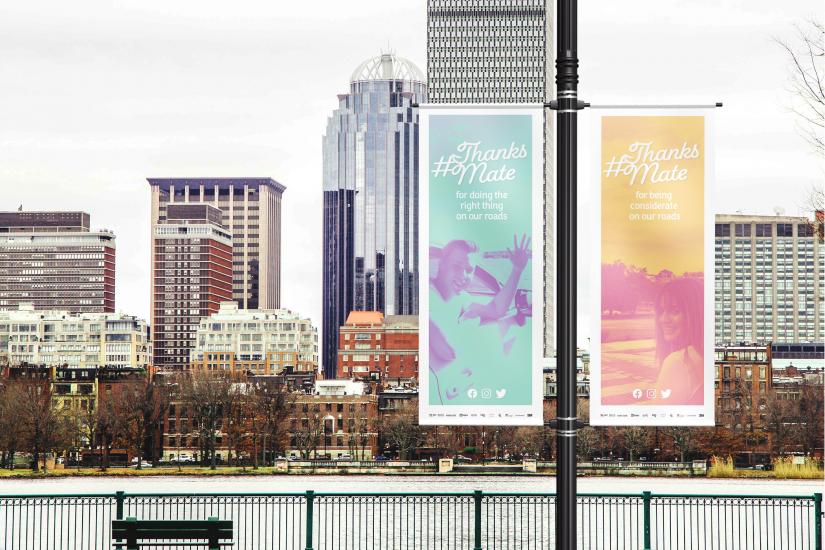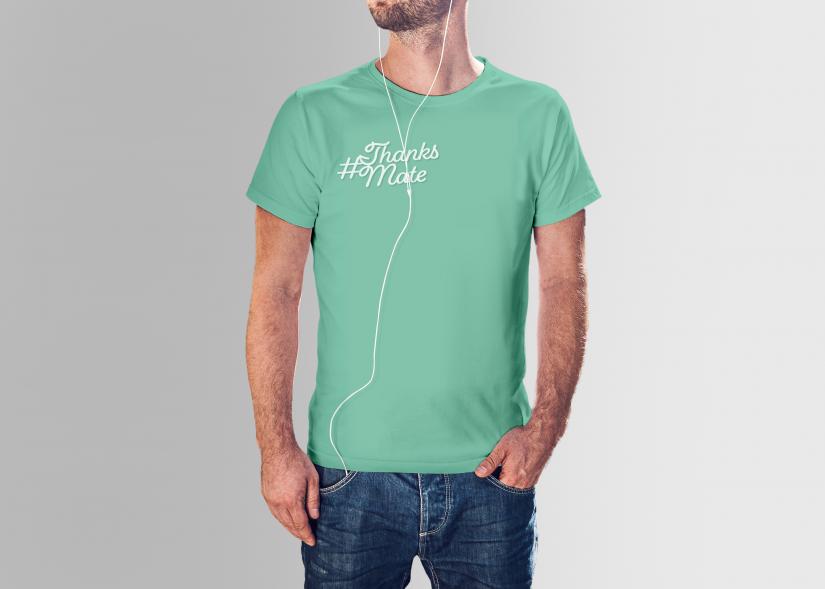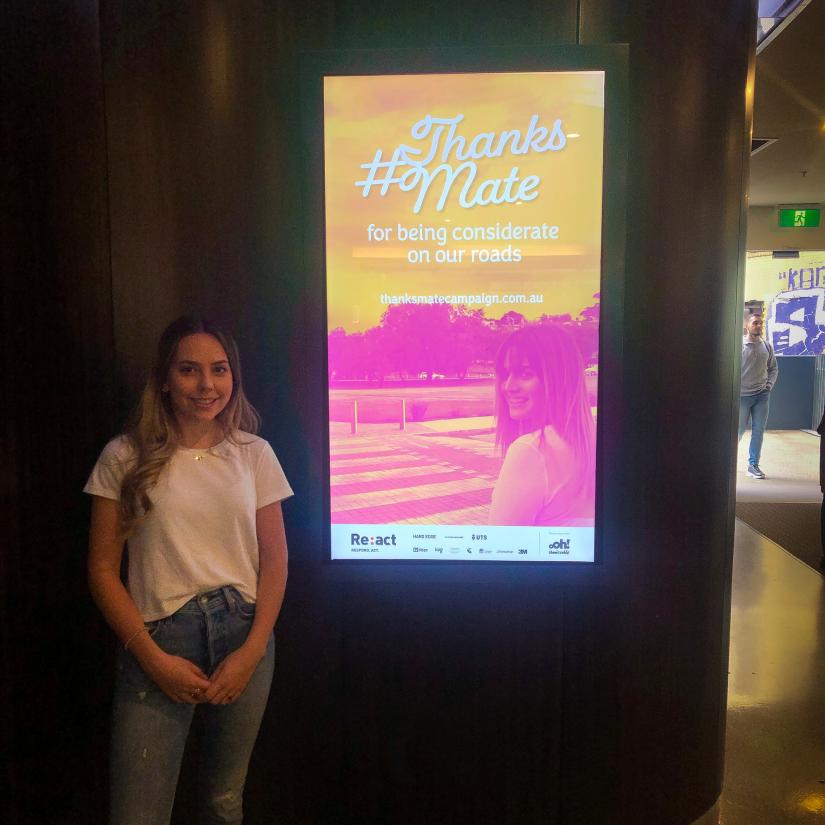Road safety design with a soft touch
We’ve all experienced road rage, but what if exchanging pleasantries was all it took to keep things civil between road users? That’s the view of UTS Bachelor of Visual Communications student Beth Sacco – and she’s got a city-wide advertising campaign to prove it.

UTS Visual Communication student Beth Sacco developed a campaign that used the concept of gratitude to inspire positive road usage behaviours.
Sacco, a third-year student, was recently announced as the NSW winner of the Re:act initiative, which is now part of the Design Practice subject at UTS. Run by Melbourne-based creative agency Hard Edge Media, Re:act is an annual communication design project that raises awareness of road safety issues for people aged 18-25.
This year, students were asked to develop a campaign idea with a focus on protecting vulnerable road users in the target demographic, such as cyclists and pedestrians. Sacco developed a campaign and hashtag called #thanksmate that used the concept of gratitude to inspire positive road usage behaviours.
“The brief was about creating a sense of shared responsibility on the roads, and that meant shared responsibility between drivers, pedestrians and cyclists in order to reduce the overrepresentation of young people killed and injured on our roads,” she says.
“The purpose of my campaign is to promote a positive message and expect positive behaviours on the road by giving thanks to people who are doing the right thing.”

T-shirt mockup by Beth Sacco for her #thanksmate campaign.
The #thanksmate campaign was built around three key messages – one each for cyclists, pedestrians and drivers – that thanked road users for being considerate, doing the right thing, and being mindful of the safety of others. Along with the #thanksmate hashtag, the messages were splashed across colourful, duo-toned posters that showed each type of road user in action.
In developing the design, Sacco conducted a rigorous program of research that revealed young people are far more likely to respond to positive messaging rather than to being scolded for wrongdoing. She also looked at the direct, indirect and outer stakeholders of road safety and its impacts, the underlying causes of young people being injured and killed on the roads.
“I found out that people do know what the right thing to do on the roads is. Everyone knows that you have to abide by the speed limit, not use your phone, give way to pedestrians and give cyclists enough room, so it wasn’t a matter of teaching the safe behaviours as much as reminding people to do them,” she says.
“That was where the idea of Thanks Mate arose from – I wanted to give thanks to the people who are doing the right thing, and I felt like the slogan would also act as a reminder for people who had maybe slipped up.”
The purpose of my campaign is to promote a positive message and expect positive behaviours on the road by giving thanks to people who are doing the right thing.
As part of the Re:act process, Sacco presented her design concept and her final project to a road safety industry panel comprised of representatives from Re:act partner organisations, including Transport for NSW, Transurban, IAG, Telstra, Australia Post and 3M. The panel gave feedback on the initial concept and was also involved in the judging process to nominate the winning campaign.
“Presenting in front of the partners was an incredible experience. Many of them knew what had worked in previous campaigns and what didn’t so this advice really helped in the development of my work,” she says.
As the NSW winner of this year’s Re:act initiative, Sacco had the privilege of seeing her campaign splashed across venues and shopping centres throughout Sydney thanks to Hard Edge sponsor oOh!media.
“I was so, so excited, but also very surprised – I didn’t expect it at all!” she says.
“Having the opportunity to make a difference to road safety awareness through design is such a privilege.”

As the NSW winner of this year’s Re:act initiative, Sacco saw her campaign displayed across Sydney.
As well as giving her exposure to the experience of designing a real-world advertising campaign, she says the experience of working on the Re:act brief has also forced her to think about her own road safety habits, particularly given the campaign’s emphasis on people in Sacco’s own demographic.
“I’m not known for being the world’s best driver, so ever since I’ve done the project, I’ve been a lot more mindful crossing roads and being a driver and looking out for people,” she says.
“It has definitely changed my attitude towards my own safety.”
Learn more about the UTS Bachelor of Design in Visual Communication.
